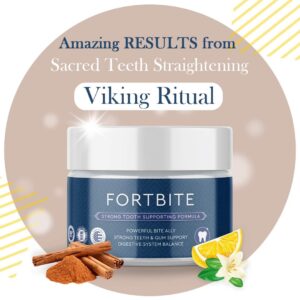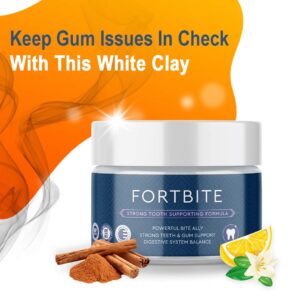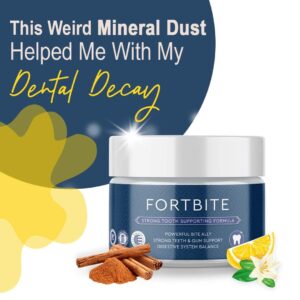The Distinction Between Tartar and Plaque
It’s a wonderful question that plenty of people ask their dentist: “Is there a difference between plaque and tartar?” Plaque and tartar accumulation are both typical dental issues. Tooth decay and gum disease can be brought on by significant plaque accumulation. Calcified plaque is tartar. You can take better care of your teeth by arming yourself with knowledge.
Facts Regarding Plaque
Plaque, a sticky, colorless coating made of bacteria, naturally forms on tooth surfaces, particularly those near the gum line, four to twelve hours after brushing. Food and beverage sugars can react with plaque bacteria to release acids. These acids damage tooth enamel and cause it to deteriorate, which can lead to cavities. Like gingivitis, plaque bacteria can also cause gum disease. Your best weapons against plaque are consistent brushing and flossing. If plaque is not regularly removed, it will eventually build up and harden into tartar.
The Hard Truth About Tartar
Tartar is a tenacious deposit that can retain stains and cause tooth discoloration. It is a hard, crusty buildup. Tartar is created when minerals in your saliva react with leftover plaque on the tooth’s surface. can only be removed by a dentist, but you may actively avoid it with a good brushing routine with Oral-B electric toothbrushes.
What are the main distinctions between plaque and tartar?
Your teeth require special care and attention because they are prone to a variety of dental problems. You must protect your teeth from tooth decay, plaque, tartar, and other oral health issues. Enamel, the toughest substance in your body, covers your teeth. However, if you neglect your teeth and allow plaque to accumulate and harden, you run the risk of developing tartar.

In some cases, tartar advances and results in gum disease, which has an impact on your general dental health. It’s important to know the distinction between plaque and tartar because it’s common to mistake one for the other. Understanding the differences between plaque and tartar will make it simpler for you to recognize the situation and take the necessary action.
Describe Plaque
Plaque is present on everyone’s teeth. Once the bacteria combine with the saliva and food, a slimy, soft film forms on the teeth. More than 500 different types of bacteria are present in this plaque, some of which are beneficial for your teeth while others are highly harmful. When you consume sugary foods or beverages, bacteria tend to generate acid that damages the enamel of your teeth and harms both your oral and general health.
Describe tartar
When plaque is left on your teeth, it hardens into a crusty deposit that tends to collect stains and discolor your teeth. Calculus, another name for tartar, develops when salivary minerals interact with leftover plaque on a tooth’s surface. In order to prevent periodontal disease, a dentist will need to remove the tartar that has formed on the outside of your teeth because it has the potential to spread below the gum line.
Let’s examine the main distinctions between plaque and tartar to better grasp them.
Plaque
- Plaque is typically colorless and appears as a fuzzy film over your teeth.
- Brushing and flossing on a regular basis might help to eradicate plaque. Plaque can also be eliminated with routine dental visits and dental scaling.
- After eating or drinking, plaque tends to accumulate on your teeth throughout the day.
Tartar:
- Plaque that is left on your teeth after brushing and flossing hardens over time to form tartar.
- Tartar has a gritty texture and a yellow or brown color.
- Tartar cannot be eliminated by yourself. If you attempt to scratch it off, you risk injuring your teeth because it has hardened. To get tartar off, you’ll require expert assistance.
Why do dental plaque and tartar form?

Poor oral hygiene is the main cause of tooth plaque and tartar formation. Certain meals that are high in sugar and starch feed the bacteria already present in the mouth and hasten the development of plaque, especially if you don’t wash your teeth thoroughly after eating them. Other reasons why dental plaque develops include:
- Dehydration or certain drugs can cause dry mouth.
- habitual smoker
- excessive sugar consumption
- history of radiation to the head or neck
What Plaque and Tartar Symptoms Are There?
A hazy sensation on the teeth is a straightforward sign of plaque. Additionally, the following are warning signals to watch out for:
- foul breath, sometimes persistent
- bleeding gums after brushing that are swollen and uncomfortable
- can be accompanied by tooth decay, gingivitis, and other tooth and gum conditions.
- Following are the signs that tartar has already formed from plaque:
- Possibly an abscessed tooth
- Chronic bad breath
- Teeth discoloration – stains on the teeth’s surface that are brown, black, or yellow
- gum irritation
What is the Cure for Tartar and Plaque?
The most effective defense against the development of plaque and tartar is good oral hygiene practice. If it is severe, your dentist may recommend one of the following procedures for eliminating plaque from teeth:
- Treatments with fluoride to prevent tooth decay and decrease the growth of germs
- Drugs that combat dry mouth and promote saliva production
- Dental sealants that have been deemed antibacterial to prevent the development of plaque
- Home plaque removal
- Now that you know the distinction between plaque and tartar, let’s look at efficient plaque removal methods to stop future dental issues.
You must be consistent with your brushing and flossing routines because plaque collects in the spaces between your teeth and gums. As it provides better cleaning than a standard manual toothbrush, you might try the Oral-B 100 White Criss Cross Electric Rechargeable Toothbrush. For increased reach, the cross-action toothbrush bristles encircle the teeth at a 16-degree angle, and the 2D cleaning action of the brush head oscillates and spins to remove more plaque. Moreover, it
Try using Oral-B Essential Mint Dental Floss during flossing. It glides between your teeth and removes plaque that is difficult to reach because of its thin wax coating and shred-resistant texture.
The gum swelling generates pockets where the plaque can gather if you already have gum disease. In these situations, you must visit your dentist for plaque removal and choose dental scaling since, if left untreated, plaque beneath the gums can cause inflammation or harden into tartar.
Fluoride toothpaste should be used since it can lessen dental issues brought on by plaque and bacteria. Also, since the bacteria that cause plaque feed on sugar, reducing your intake of sugary foods might be a good idea.
How to stop tartar from forming?

You must visit the dentist to have the tartar removed because you are unable to do it yourself. Instead of removing tartar from your teeth, there are certain actions you may take to avoid tartar buildup. What you can do is:
Regularly floss and wash your teeth twice a day: You must be consistent with your twice-daily tooth brushing. The Oral-B iO 8 Ultimate Clean Electric Toothbrush is another option. It has six Smart Modes that let you customize your brushing, and its Artificial Intelligence can detect your preferred brushing technique and direct you to make sure you cover every tooth so you don’t miss one.
Additionally, for a fresh, clean mouthfeel and healthier gums, this electric toothbrush blends the distinctive round brush head from Oral-B with soft micro-vibrations. Additionally, remember to floss your teeth. You can use Oral-B Essential Mint Floss because it slides through your teeth smoothly and removes plaque that is difficult to reach.
Watch your diet: you avoid plaque and tartar buildup, and be sure you consume fewer sugary foods and drinks. However, if you do, make sure to brush and floss your teeth right away.
Keep regular dental appointments; because you can’t attempt tartar removal on your own, make sure to do so. Aim for a checkup every six months and choose a dental cleaning.
Think about dental sealants: They guard your teeth from deterioration and shield your molars from cavities.2
Consider getting quick treatment to avoid the deterioration of your tooth enamel and the danger of gum disease now that you are aware of the differences between plaque and tartar and what causes these illnesses. By using Oral-B’s cutting-edge dental products and adhering to these preventative practices, you can keep plaque and tartar at bay.
Questions and Answers
Plaque or tartar: which problem is more serious?
When you eat sugary foods, a colorless film of bacteria called plaque grows on your teeth. Tartar, on the other hand, is a mineral accumulation that is visible if it is above the gum line. Plaque is simple to remove, but tartar requires a dentist since it is a more difficult substance to remove.
Is it a good idea to scrape tartar off of the teeth?
Although you can buy plaque scrapers in stores, it is not a good idea to use them to remove tartar from your teeth. If you don’t know how to utilize the blades, it can harm your teeth and, given how sharp they are, it can harm your sensitive gums.
How long does plaque take to become tartar?
Plaque hardens into tartar if it isn’t consistently removed by brushing or flossing. On the front and back of the teeth, tartar accumulates along the gum line and becomes noticeable. The collected tooth plaque turns into tartar after 24 to 72 hours.
